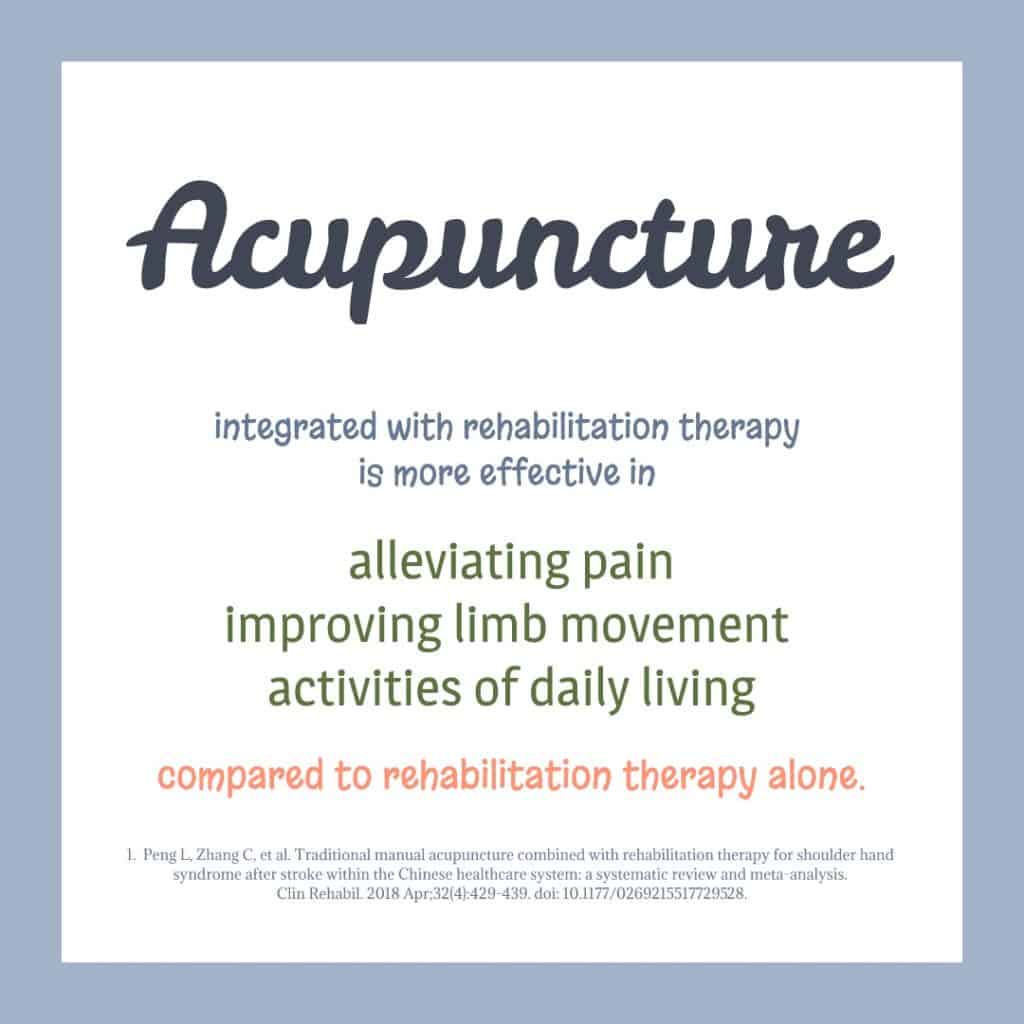
Traditional manual acupuncture combined with rehabilitation therapy for shoulder hand syndrome after stroke within the Chinese healthcare system: a systematic review and meta-analysis
Abstract
Objective: To investigate the effectiveness of traditional manual acupuncture combined with rehabilitation therapy versus rehabilitation therapy alone for shoulder hand syndrome after stroke.
Methods: Randomized controlled trials that compared the combined effects of traditional manual acupuncture and rehabilitation therapy to rehabilitation therapy alone for shoulder hand syndrome after stroke were included. Two reviewers independently screened the searched records, extracted the data and assessed risk of bias of the included studies. The treatment effect sizes were pooled in a meta-analysis using RevMan 5.3 software.
Results: A total of 20 studies involving 1918 participants were included in this study. Compared to rehabilitation therapy alone, the combined therapy significantly reduced pain on the visual analogue scale and improved limb movement on the Fugl–Meyer Assessment scale and the performance of activities of daily living (ADL) on the Barthel Index scale or Modified Barthel Index scale. Of these, the visual analogue scale score changes were significantly higher (mean difference = 1.49, 95% confidence interval = 1.15–1.82, P < 0.00001) favoring the combined therapy after treatment, with severe heterogeneity (I2 = 71%, P = 0.0005).
Conclusion: Current evidence suggests that traditional manual acupuncture integrated with rehabilitation therapy is more effective in alleviating pain, improving limb movement and activities of daily living.
Keywords: Traditional manual acupuncture, rehabilitation therapy, shoulder hand syndrome, stroke
